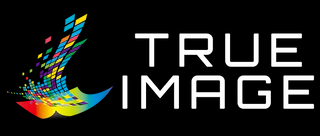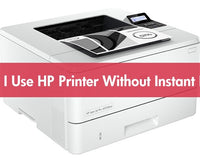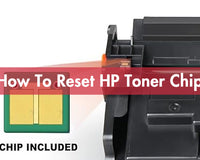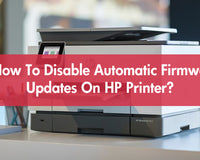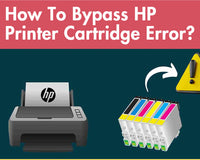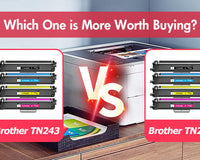Ever thought about printing your favorite memories onto something a little more, well, touchable than a standard photo? If you’re into the idea of creating custom pillows, T-shirts, or even quirky wall art from the comfort of your own home, then printing pictures on fabric is the next creative adventure calling your name. And guess what? You don’t need fancy equipment or a professional studio to do it. All it takes is a regular inkjet printer, the right materials, and a little guidance (that's where I come in).
In this guide, I’ll walk you through everything you need to know to print pictures, images, and even those stunning flower prints on fabric. From choosing the best photos to handling your fabric just right, I’ll cover the whole shebang. Plus, I’ll share some pro tips for getting vibrant, long-lasting results that will make you feel like a fabric-printing genius. Ready to dive into a world where your printer goes from boring office duty to full-on art studio mode? Let’s get started.
Content:
I. Introduction: Unlocking the Art of Printing Pictures on Fabric at Home
II. Materials You Need for Image Printing on Fabric
III. Step-by-Step Guide to Print a Photo on Fabric
- Step 1: Select and Prepare Your Image
- Step 2: Choose the Right Fabric and Prepare It
- Step 3: Load the Fabric Sheet into Your Printer
- Step 4: Print the Image onto the Fabric
- Step 5: Heat-Set the Ink for Longevity
- Step 6: Trim and Use Your Printed Fabric
- Optional Step: Add a Protective Finish
IV. Tips for Printing Photographs on Fabric for Best Results
V. DIY Project Ideas Using Printed Fabric
VI. Troubleshooting and FAQs for Printing Pictures on Fabric
VII. Conclusion: Start Printing Your Memories on Fabric Today!
I. Introduction: Unlocking the Art of Printing Pictures on Fabric at Home
Picture this: you've just taken a photo that’s too good to keep hidden in a dusty album. Or maybe you want to add a personalized touch to a pillow, tote bag, or even a quirky patch for your denim jacket. The magic of printing pictures on fabric can bring these visions to life—and you can do it right from your living room!
Printing images on fabric might sound like a fancy process, but it's surprisingly accessible, even if you're a total beginner. With the right materials and a trusty inkjet printer, you’ll be able to print photographs, images, and graphics directly onto fabric, opening up endless possibilities for home décor, custom fashion, and handmade gifts.
Why Print Pictures on Fabric?
Imagine walking into a room and spotting your favorite landscape photo transformed into a one-of-a-kind fabric wall art piece. Or maybe you're holding a pillow with your best friend’s smiling face on it—now that’s a conversation starter! Printing pictures on fabric doesn’t just add personality to your space; it also gives you the freedom to create unique, meaningful items that are entirely your own.
Plus, there’s the thrill of DIY. Whether you’re looking to brighten up your home with eco-friendly designs or create personalized gifts that people will actually love, printing on fabric is a fun and surprisingly easy way to get creative.
What Makes This Possible?
Thanks to advancements in inkjet printer technology, picture printing on fabric has become a smooth, beginner-friendly process. You don’t need a special industrial printer; your home inkjet printer will work just fine, as long as you know a few tricks. With some simple steps and the right materials—like pre-treated fabric sheets or a little spray adhesive—you’ll be well on your way to crafting beautiful, lasting prints.
So, let’s demystify the art of fabric printing and unlock the secrets to creating your own customized designs at home. From choosing the right type of fabric to nailing the perfect printer settings, I’ll show you everything you need to bring your ideas to life. Let's dive in!
II. Materials You Need for Image Printing on Fabric
Alright, let’s talk supplies. To get started with printing pictures on fabric, you don’t need a high-tech studio or a cartful of obscure materials. In fact, you’ll probably have most of what you need already lying around. Here’s a list of essentials, along with a few tips to make sure you pick the best options for vibrant, long-lasting prints.
1. Inkjet Printer
Let’s start with the star of the show—your inkjet printer. Don’t worry if you don’t have a top-of-the-line model; most basic home inkjet printers will do the trick. Just make sure it’s not a laser printer (the ink and heat don’t mix well with fabric). For those using eco-solvent inks or dye-based inks, you're already a step ahead, as these inks tend to bond well with fabric fibers and keep colors popping.
- Pro Tip: If you’re planning on printing pictures on fabric regularly, it might be worth looking into printers with high-resolution settings or photo-specific ink cartridges. The sharper the image, the better the print!
2. Printable Fabric Sheets (or DIY Treated Fabric)
This is where things get fun. You can buy printable fabric sheets that are specially treated to work with inkjet printers. These sheets are usually backed with a paper that allows them to run through your printer like regular paper, making the whole process super simple.
If you’re feeling a bit more DIY, you can create your own printable fabric by treating regular cotton or linen with fabric adhesive spray. Lightly spraying the fabric makes it stiff enough to go through the printer without jamming. Here is a detailed video on how to handle fabric materials:
- Quick Tip: Check the fabric type if you’re buying printable sheets. Cotton and linen fabrics work best for clear, sharp images. If you’re experimenting with textures, though, there’s no harm in trying out different fabric types to see what sticks!
3. High-Quality Ink
Ink can make or break the look of your final print. Most inkjet printers come with dye-based ink, which can produce bright colors but may fade over time with washing. Pigment-based ink, on the other hand, holds up better and offers great color longevity, making it ideal for items like fabric wall art or decorative pillows. When it comes to ink, True Image's high-quality ink cartridges are a great option to get your hands on, covering a wide range of HP inks, Brother cartridges, and Canon inks.
- Ink Insight: If your project will be frequently washed or exposed to light, consider using pigment-based ink cartridges. They cost a bit more, but they’re worth it if you want lasting color.
4. A Sharp Pair of Scissors or Rotary Cutter
Once your print is ready, you’ll need to cut out your design. A clean, sharp cut will help prevent fraying edges and give your fabric a polished look. Scissors will work fine, but if you want more control and smoother edges, a rotary cutter is a great option—especially if you’re cutting multiple sheets for a larger project.
5. Heat Setting Tools (Iron or Heat Press)
To keep your printed image vivid and lasting, it’s crucial to heat-set the ink on the fabric. This step helps bond the ink to the fabric fibers so it won’t run or fade as easily. An iron on a cotton setting will do the job, but if you have a heat press, you’ll get a stronger, longer-lasting finish.
- Pro Tip: Always use a piece of parchment paper or cloth over your printed fabric when ironing. This keeps the ink from transferring and ensures an even setting.

Armed with these materials, you’re all set to start printing pictures on fabric with confidence. You don’t need to break the bank—just a few basic supplies, and you’ll be ready to create unique, personalized fabric art that’s bound to turn heads.
III. Step-by-Step Guide to Print a Photo on Fabric
Ready to turn your digital photos into tangible fabric art? This step-by-step guide will walk you through every stage of printing pictures on fabric using an inkjet printer. Just follow along, and by the end, you’ll have beautiful, custom-printed fabric pieces that you can use for sewing projects, home décor, or gifts.
Step 1: Select and Prepare Your Image
The first and most important step is choosing the right image. High-resolution photos or graphics will yield the best results, especially for detailed designs.
- Image Resolution: Aim for at least 300 DPI (dots per inch) for sharp, clear prints on fabric. Lower resolutions may result in blurry or pixelated images, so a higher DPI is worth it for quality.
- Size and Dimensions: Crop and resize your image to match the fabric piece you’ll be printing on. Standard printable fabric sheets are typically 8.5 x 11 inches, so adjust your image accordingly if you’re printing on this size.
- Editing (Optional): Before printing, you might want to tweak colors, brightness, or contrast in an editing program like Photoshop or even free tools like Canva. This can help your image pop on fabric, where colors may look slightly different compared to regular paper. This is a simple tutorial on how to edit images with Canva:
Step 2: Choose the Right Fabric and Prepare It
Now, let’s talk fabric. The type of fabric you use will directly affect the look and feel of your final print.
- Recommended Fabrics: Light cotton and linen fabrics work best, as they absorb ink well and provide a smooth surface for the print. Avoid overly textured fabrics, like burlap, which can distort the image.
- Prepping Fabric Sheets: If you’re using DIY-treated fabric, make sure it’s attached firmly to a backing (like freezer paper or cardstock) to avoid jamming in the printer. For pre-treated fabric sheets, simply follow the package instructions, but ensure the fabric side is facing down in the paper tray.
- Quick Tip: Iron your fabric sheets to remove wrinkles before printing, as wrinkles can interfere with ink application and distort the print.
Step 3: Load the Fabric Sheet into Your Printer
Printing on fabric can be a bit more sensitive than paper, so handle it with care. Here’s how to prep your printer:
- Insert Carefully: Load your fabric sheet just as you would regular printer paper, with the fabric side facing the ink jets. Double-check that the sheet is lying flat to avoid misfeeds.
- Select Printer Settings: Go to your printer’s settings and select “Best” or “High Quality” under print quality for the most vibrant colors. Choose “Photo Paper” or “Matte Paper” for paper type, as this setting will allow the printer to deposit more ink on the fabric. For more information on exactly how to adjust your printer settings, you can refer to the video below:
- Test Print (Optional): If this is your first time printing on fabric, consider doing a test print on regular paper to make sure colors and details appear as expected. This can save you from any surprises when using the fabric.
Step 4: Print the Image onto the Fabric
Now it’s time to bring your image to life!
- Start Printing: Hit the “Print” button and watch your printer work its magic. Keep an eye on the fabric as it prints—if you notice any issues (like the fabric getting caught), pause and fix it to prevent smudging.
- Drying Time: Once printed, let the fabric sit for a few minutes to allow the ink to fully dry. Avoid touching the print immediately, as smudging can occur with wet ink.
Step 5: Heat-Set the Ink for Longevity
Once your image is printed, it’s essential to heat-set the ink. This step locks the ink into the fabric fibers and prevents fading or washing out.
- Using an Iron: Place a piece of parchment paper or cloth over your printed fabric to protect the ink. Set your iron to the cotton setting (without steam) and press down on the fabric in 10-15 second intervals, moving across the entire print. Repeat 2-3 times for thorough heat setting.
- Using a Heat Press: If you have access to a heat press, set it to around 300°F (150°C) and press the fabric for about 30 seconds. This method is more consistent and provides a stronger bond, especially for designs that might be washed or handled frequently.
Step 6: Trim and Use Your Printed Fabric
Your printed fabric is ready to be the star of your next creative project! Depending on what you’re making, you might need to trim the fabric to fit your design.
- Cutting Tips: Use sharp scissors or a rotary cutter for clean edges, especially if you’re planning on sewing the fabric.
- Project Ideas: Attach your printed fabric to canvas for a unique wall piece, sew it onto a tote bag, or use it as a decorative patch for clothing. The possibilities are endless, and your fabric print will add a personal, custom touch to any project.
Optional Step: Add a Protective Finish
For extra durability, especially on items that will be washed, consider adding a fabric sealant.
- Fabric Sealant Sprays: A few light coats of fabric sealant spray can make your print more resistant to water and wear, prolonging its lifespan.
- Application: Apply the sealant in a well-ventilated area and follow the manufacturer’s instructions. Let it fully dry before using or washing the fabric.
By following these steps, you’ll be able to print pictures on fabric like a pro! Not only will you have unique, personalized fabric prints, but you’ll also have a new skill that can take your DIY projects to a whole new level. Ready to create something truly one-of-a-kind?
IV. Tips for Printing Photographs on Fabric for Best Results
Printing on fabric can be incredibly rewarding, but it also comes with its quirks. Here are some tried-and-true tips to help you get the best possible results, along with a few pitfalls to avoid.
1. Choose High-Contrast Images for Clarity
Not all images translate perfectly onto fabric. Fabric has a softer texture and can absorb ink differently than paper, so images with high contrast and bold colors often produce the clearest, most vivid results.
- Avoid Muted Colors: Pastel or very light shades may appear even softer or washed out on fabric, so choose images that have strong colors and defined lines.
- Contrast Levels: If your image appears too light or lacks definition, increase the contrast slightly in a photo editor. This will help make details pop on the fabric, even if the colors differ slightly from the screen version.
2. Maintain Printer Hygiene
Fabric sheets can leave tiny fibers and dust in your printer, which can affect print quality and even cause jams over time. Keeping your printer clean is crucial for crisp prints.
- Clean Printer Heads Regularly: Run a print head cleaning cycle before printing on fabric to ensure there’s no ink buildup that could cause smudges or uneven colors.
- Dust-Free Environment: Keep fabric sheets in a dust-free area until you’re ready to use them, as lint and dust particles can interfere with print quality.
3. Use High-Quality, Pre-Treated Fabric Sheets for Convenience
For beginners or those wanting consistent results, pre-treated fabric sheets made for inkjet printing can save time and reduce risk.
- Ink Compatibility: These sheets are specially coated to hold ink better, helping your print appear more vibrant and reducing the chances of bleeding or fading.
- No Fabric Prep Needed: With pre-treated fabric sheets, you can skip the DIY fabric prep, saving you time and ensuring a smooth printing experience. They’re available in various finishes (matte, glossy, etc.) so you can choose the look that best suits your project.
4. Print on a Test Sheet First
Before hitting “Print” on your final image, consider doing a test print on paper. This helps you preview the colors, size, and layout before using the fabric sheet.
- Size and Alignment Check: Make sure your image is centered and positioned correctly to avoid cut-off details on the fabric. You can use your printer’s “Print Preview” function to double-check this as well.
- Confirm Color Balance: A test print on regular paper can reveal any unexpected color shifts, allowing you to adjust them if needed before using the more expensive fabric sheet.
5. Handle Printed Fabric with Care After Printing
Once you’ve printed your image onto fabric, handle it gently to prevent smudging or accidental ink transfer.
- Drying Time: Give the fabric at least 15 minutes to dry completely before heat setting or handling it further.
- Avoid Touching the Printed Area: Freshly printed ink can be sensitive to touch, especially on fabric, so avoid placing fingers on the design to prevent smudging.
6. Double-Check Printer Settings Before Each Print
Inkjet printers can sometimes revert to default settings, so always confirm your settings before printing on fabric.
- Choose the Right Quality: Set the print quality to “High” or “Best” for optimal detail and color. Also, select “Photo Paper” or “Matte” paper type, as these options generally use more ink, making prints on fabric more vibrant.
- Check Paper Size and Orientation: Make sure your printer settings match the size and orientation of the fabric sheet to avoid misalignment or cropping errors.
V. DIY Project Ideas Using Printed Fabric
Once you’ve mastered the art of printing pictures on fabric, the creative possibilities are endless! Here are a few fun, easy-to-do DIY projects to get you started.
1. Personalized Tote Bags
Create a truly one-of-a-kind tote bag with your favorite image or design! Choose a sturdy canvas fabric, print a high-contrast photo, and then sew or iron it onto a plain tote. It’s a perfect way to showcase your style, and these totes also make thoughtful, custom gifts. For example, you can watch the following video to practice making a beautiful dilly bag:
2. Custom Pillow Covers
Print family photos, nature scenes, or abstract designs onto fabric to create custom pillow covers. Using softer fabrics like cotton or linen can make them cozy, and adding unique prints makes them personal and eye-catching. Just print, sew, and stuff for an instant décor upgrade.
3. Framed Fabric Art
Why not frame your printed fabric as wall art? You can use embroidery hoops, shadow boxes, or classic picture frames to display your favorite images in a modern way. This project works well with landscapes, close-up textures, or even scanned floral prints for a chic, natural touch.
4. Fabric Book Covers
Add a personal twist to your favorite books by creating custom fabric book covers. Printed designs—especially abstract or nature patterns—make beautiful, protective covers for journals, sketchbooks, or novels. This project is as simple as measuring, cutting, and wrapping your fabric around your book.
5. Handmade Quilt with Photo Blocks
For a memorable keepsake, consider printing a series of photos and stitching them into a quilt. Family photos, travel shots, or even meaningful quotes can make each quilt block special. This DIY project takes time but creates a treasured, customized blanket that’s both functional and decorative.
6. Unique Fabric Gift Wraps
For a sustainable alternative to wrapping paper, print festive or themed designs onto fabric and use it to wrap gifts. Not only is it reusable, but it also adds a unique, thoughtful touch to your gift-giving. Tie it off with a ribbon or decorative string for an eco-friendly, stylish presentation.
These are just a few of the creative ways to make use of your printed fabric projects. From home décor to personal accessories, each project offers a chance to infuse your daily life with personal touches and cherished memories. So go ahead—let your creativity run wild!
VI. Troubleshooting and FAQs for Printing Pictures on Fabric
Q1: Why is the image blurry or smudged on the fabric after printing?
A common issue with fabric printing is blurry or smudged images. This can happen if the fabric is not completely flat or if it absorbs too much ink. To prevent this, make sure the fabric is securely adhered to freezer paper or a fabric sheet backing before printing. Also, try adjusting your printer settings to "high quality" or "photo paper" mode, which controls ink application better and often yields clearer results.
Q2: How can I make the printed image on fabric last longer without fading?
Printed fabric can fade over time, especially if exposed to direct sunlight or frequent washing. To make your images more durable, consider using a fabric setting spray or heat-set your printed fabric with an iron after the ink dries. Also, gentle hand-washing or spot-cleaning instead of machine washing can help extend the life of your printed designs.
Q3: My fabric jammed in the printer. How can I avoid this next time?
Fabric jams often happen when the fabric is too thick or if it isn’t properly supported on the backing paper. Ensure you’re using a thin, compatible fabric (like cotton or linen) that’s securely attached to freezer paper or a fabric sheet. Trim any loose threads and ensure the paper backing is aligned smoothly. Running a test print on a plain sheet before using fabric can also help identify any feeding issues.
With these troubleshooting tips, you’ll be ready to tackle any small bumps along the way. Remember, practice makes perfect—and each print brings you closer to fabric printing mastery!
VII. Conclusion: Start Printing Your Memories on Fabric Today!
Printing pictures on fabric at home opens up an entire world of creative possibilities, from personal gifts to unique home décor. With just a few materials and some careful preparation, you can easily transform your favorite photos into beautiful, lasting fabric prints. Throughout this guide, we’ve walked through each step—from setting up your image and choosing the right materials to troubleshooting any issues along the way. Now, it’s your turn to bring your memories to life on fabric!
To ensure the best quality for your printed images, it’s important to use ink cartridges that offer vibrant colors and consistent performance. At True Image, we take pride in providing high-quality, compatible ink cartridges that are perfect for DIY projects like fabric printing. Our ink cartridges deliver rich colors and sharp details, helping you achieve beautiful results that truly pop. Plus, with True Image, you’ll enjoy affordability without sacrificing quality.
So, why wait? Gather your supplies, unleash your creativity, and start printing your memories on fabric with confidence—True Image has you covered every step of the way!
Related Articles:
How To Print An Email Outlook?
How to Print Your Own Personalized Holiday Cards at Home - DIY Guide
